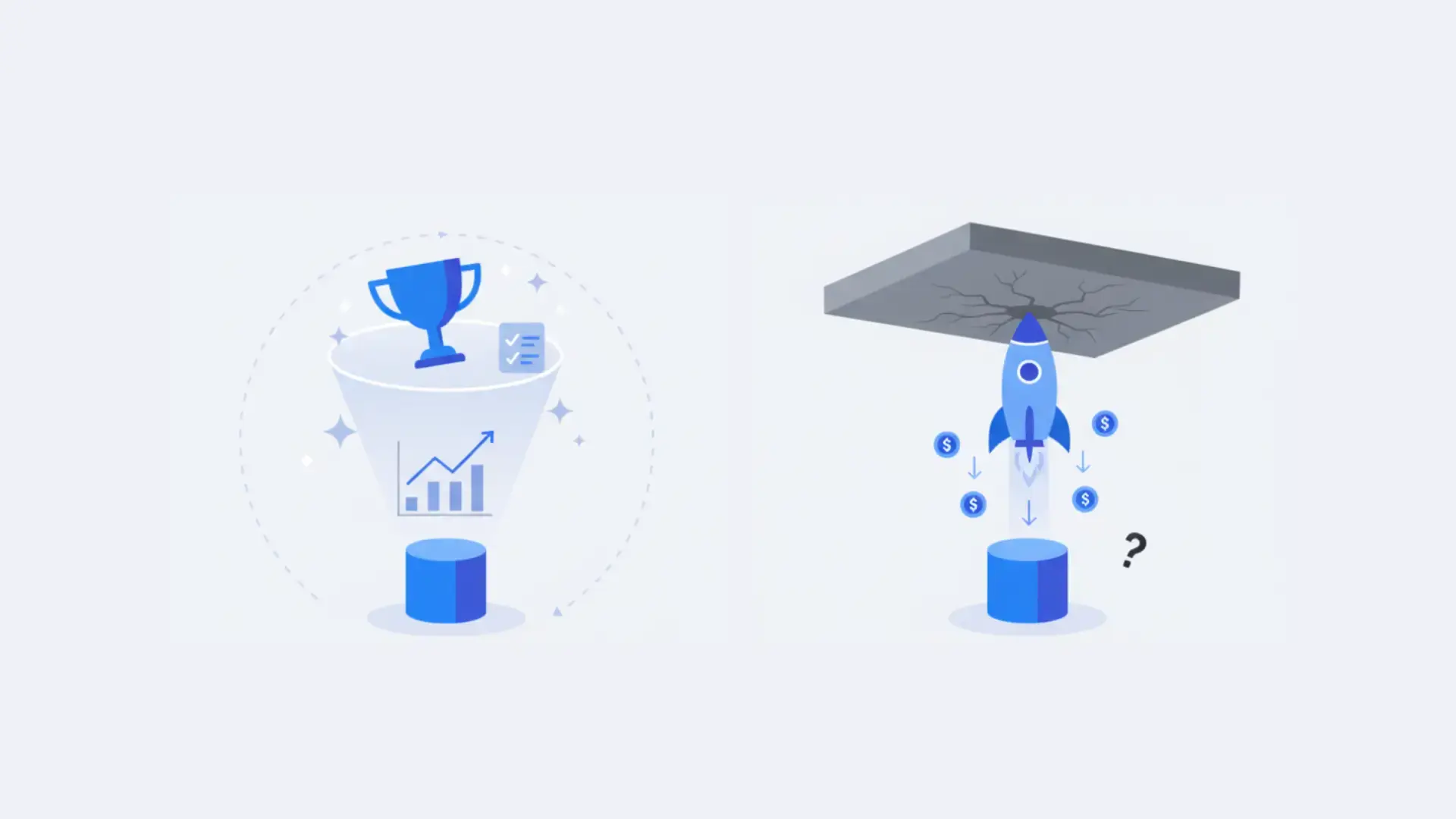In B2B SaaS, founder-led growth is often the spark that gets a company off the ground. Founders know the problem, believe in the solution, and can explain it with a credibility no one else can match. Customers respond to that passion and clarity.
But the same force that accelerates early traction can later hold a company back. As Brian Graf and Stijn Hendrikse discussed in episode 89 of B2B SaaS Marketing Snacks, founder-led growth drives powerful signals for investors early on, yet it can also become the ceiling if companies fail to move beyond it.
For VCs, the challenge is knowing when founder-led growth is still a strength and when it has become a limitation.
Why Founder-Led Growth Sends Strong Early Signals
Founder-led growth gives investors some of the clearest early markers of traction:
- Lived experience: Founders often create companies because they personally felt the problem. That connection fuels authenticity and conviction that no hired executive can match.
- Clarity of articulation: Founders know both the problem and the solution intimately. They can explain pain points and positioning with unmatched clarity, cutting through noise in crowded markets.
- Industry credibility: Many founders already have reputations as practitioners or thought leaders in the industry they’re now serving. Customers transfer that trust to the new company more easily than they would to a brand logo.
- Customer intimacy: Founders often embody customer success early on, building direct relationships that drive loyalty, referrals, and advocacy.
Together, these factors make founder-led traction one of the strongest early signals of product-market fit for VCs.
When Founder-Led Growth Becomes the Ceiling
The same strengths that create early momentum can later constrain scale:
- Time limits: Founders can’t be everywhere as the company grows. Deals close faster when the founder is in the room, but they can’t join every call. Product decisions and customer escalations still bottleneck around them.
- Reach limits: Founders connect deeply with their original ICP, but that empathy and credibility fade as the company expands into adjacent markets or larger segments.
- Cultural limits: Early energy often comes from the founder’s values and charisma. As the company matures, culture must evolve into more structure and discipline. Some hires thrive in that shift, others struggle.
- Formula limits: Founders often assume what worked in the early days will keep working, which delays the move to specialized leadership and scalable systems.
When these limits stack up, founder-led growth shifts from a strength to a ceiling, and companies stall just as investors expect acceleration.
So, Signal or Ceiling?
The answer is: both, it depends on when you look.
- In the early stages, founder-led growth is one of the strongest signals of product–market fit and market potential. For investors, it shows authenticity, traction, and trust that are hard to manufacture.
- As the company scales, the same dynamics can become the ceiling. If growth remains dependent on the founder’s bandwidth, credibility, or charisma, momentum eventually stalls.
That’s why the central investor question isn’t whether founder-led growth is valuable, it always is, but whether it has been translated into scalable systems and a capable team.
The VC Checklist: How to Spot Scalable Founder-Led Growth
Founder-led growth powers the early stages of many B2B SaaS companies. The question for VCs is whether that momentum can scale, or if it stalls once the founder’s bandwidth runs out.
This checklist helps you tell the difference:
- Codified Playbooks: Has the founder’s approach to sales, messaging, and customer success been documented and taught to others, or does it live only in their head?
- Founder Amplification: Is the founder’s credibility scaled through content, thought leadership, and systems, or is it still limited to their personal availability?
- Team Autonomy: Can the team close deals, serve customers, and ship product without the founder in the room, or does performance collapse when they step back?
- Cultural Evolution: Have the founder’s values been translated into systems and norms the team can carry forward, or do they fade once the founder steps back?
- Repeatable GTM Motion: Is there evidence of a structured funnel and measurable marketing/sales process, or is growth still driven by referrals and founder-led hustle?
Companies that meet these conditions can move from founder-led growth to scalable growth. Those that do not risk stalling at the very moment investors expect acceleration.
Kalungi: Helping B2B SaaS Companies Break the Founder-Led Ceiling
Founder-led growth is one of the strongest signals in B2B SaaS. But it is also one of the most common ceilings. The companies that win are the ones that protect founder authenticity while building systems to scale beyond it.
At Kalungi, we have helped hundreds of SaaS companies make this transition. We know how to turn founder energy into repeatable go-to-market systems that fuel growth at scale.
If you want to see how to help your portfolio companies preserve founder strengths while building scalable engines, let's talk!
